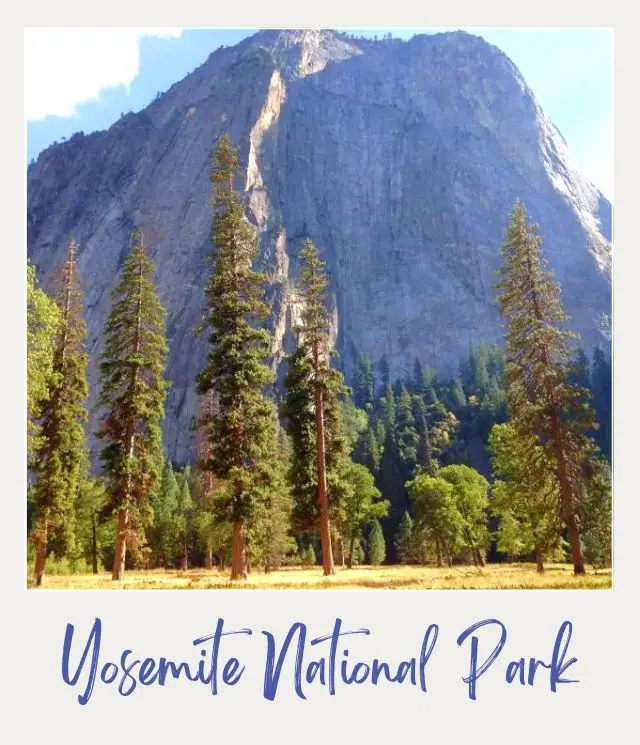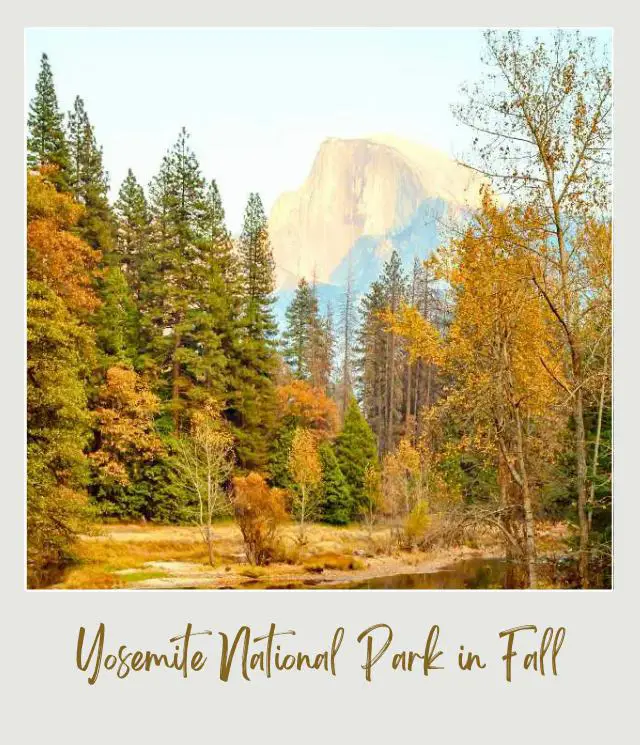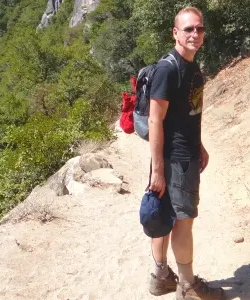If you’re thinking of visiting Yosemite National Park, then the best time to visit is one of the first things to think about when planning your trip.
The answer may vary depending on your interests, preference for weather, and tolerance for crowds.
I’m James and I’m a national park expert. In this article, I’ll give you a quick summary of the best times to visit Yosemite National Park.
‼️ While this is my choice for the best time to go to Yosemite National Park, the park is great throughout the year. I’ve provided a detailed breakdown by season and every month so you can easily see what to expect and then make your own choice. ‼️
Subscribe to daily national parks planning tips, travel inspiration and trip ideas and get instant access to the free PDF of this guide to the
Best Time To Visit Yosemite National Park
No time right now to discover when is the best time to visit Yosemite National Park, California? Pin It and save it for later:


🛏️TOP HOTEL PICK: Check availability now
🚘FIND THE CHEAPEST CAR RENTAL: Search Discover Cars for the best deals
✈️FIND THE CHEAPEST FLIGHTS: Search Skyscanner for the best deals
🧳GET TRAVEL INSURANCE: Get insured with Travelex before you go
📱TAKE AN AUDIO TOUR: Buy an audio tour now
Table of Contents
The Best Time To Visit Yosemite National Park In a Nutshell

So you’re hoping to take a trip to Yosemite National Park but aren’t sure when to visit for the best experience. Overall, the best times to visit Yosemite are outside of July and August, which is the peak tourist season.
In my opinion, the best season to visit Yosemite National Park is spring or fall. Waterfalls are at their finest in April and May. In October and November the fall colors are stunning in Yosemite National Park.
Yosemite peak season is during the months of July and August, so these aren’t the best months to visit Yosemite National Park if you’re in search of peace and quiet.
Yosemite during winter is very tranquil and can be perfect if you don’t mind the cold and the snow. This is also a cheap time to travel. However, most facilities and roads are closed and it does get a lot of snow.
When is the best time of year to go to Yosemite National Park (for different interests)?

The best temperatures in Yosemite
The warmest and most pleasant months in Yosemite National Park are May, June, September and October, which are warm but not as hot as July and August.
The best time to see wildlife in Yosemite
While there is no Yosemite best season for wildlife as such, spring and fall offer good opportunities. Early morning, followed by dusk, are the best times of the day.
The best time to see waterfalls in Yosemite
Following the winter snow and rain, the spring months of April and May are the best time to see the Yosemite waterfalls in full flow. Many waterfalls dry up mostly or completely in summer.
The best time for hiking in Yosemite
If you can’t cope with crowds or heat, then avoid hiking in July and August. Spring and fall are cooler and fairly dry, but not too cold. For peace and quiet, you might like to tackle the trails in fall or even winter, as long as you have the right clothing and footwear with you.
The best time to visit Yosemite to avoid crowds
The period between November and April tends to be quietest at Yosemite. Avoid July and August at all costs if you crave solitude and silence.
The best time to travel to Yosemite National Park in summer
September is the most peaceful month of the summer for spending time in Yosemite, and is cooler than July and August. June is the next best choice to avoid extremes – and crowding.
The best time to see fall colors in Yosemite National Park:
The Yosemite fall colors are at their best between the middle of October and early December.
The best time to travel on a budget
Travel between November and April for the best deals on accommodation at Yosemite National Park.
The best time to adventure the winter in Yosemite National Park
Between mid-December and early March is the best time to spend winter in Yosemite National Park. The higher areas are ideal for skiing and other winter sports when visiting Yosemite in the winter.
The worst time to visit Yosemite National Park
Due to both high demand, high prices and high temperatures, July and August can be the worst months for visiting Yosemite.
‼️Check my detailed breakdown of what to expect every month in the year for much more detailed information.
Travel Insurance for Yosemite National Park
No matter when is the best time to go to Yosemite, you should definitely get travel insurance. This can protect you not only against medical and emergency repatriation, but can also cover things like trip cancellation, loss and/ or theft of property, etc.
➡️ A great insurance option is Travelex. It has coverage for all you’ll need. You can compare Travel Insurance plans here or get a quote right now:
Enjoy Yosemite National Park!
More Planning Resources for Yosemite National Park
⭐ Yosemite National Park Guide
⭐ Planning A Trip to Yosemite National Park: 7 Mistakes to Avoid
⭐ Guide to Yosemite National Park Ticketed Entry
⭐ How To Get To Yosemite National Park
⭐ The Airports Closest To Yosemite National Park
⭐ The Closest Airport to Yosemite National Park
⭐ When is The Best Time To Visit Yosemite National Park?
⭐ Visiting Yosemite National Park: What To Expect Throughout the Year
⭐ 10 Fun Facts About Yosemite National Park
⭐ Vacation Rentals Near Yosemite National Park
What do you think is the best time of year to visit Yosemite National Park? Join my private Facebook group National Parks Collectors and comment and let me know (you can also pick up extra planning tips, share your photos and stories with other national park lovers and more).
If you liked this article about the best time to go – Yosemite National Park, Pin It to your Yosemite National Park board!


💡 Are you just starting to think about taking a national parks trip? Get Inspiration
‼️ Are you looking for helpful tips for visiting US national parks? Read articles that share useful tips on a range of national-park related issues
💻 Are you starting to plan a trip to Yosemite National Park? Read my Guide to Yosemite National Park
🛏️ Are you looking for a place to stay near Yosemite National Park? Find a vacation rental near Yosemite National Park
💲 Are you ready to book your trip? Use these Planning and Booking Resources
📖 Do you want to read a book about US national parks? Check out my Recommended Reading Lists
About the Author

James Ian is a national park, camping and hiking expert.
He has dedicated his life to travel, visiting more than 80 countries, all 7 continents and most of the national parks in the United States. With over 35 years experience in the travel industry, James has worked on cruise ships, at resorts and hotels, and as a travel planner who’s helped hundreds of people plan successful trips to US national parks.
Based on his experience visiting our national parks multiple times, in-depth research and expertise as a travel planner, James has published detailed itineraries for many of the major national parks in the US. These itineraries, as well as in-depth park guides, and other resources will help you have your own incredible trip to US national parks without stress and hassle.
As a national park expert, James has contributed to many publications, including USA Today, Newsweek, Time Business News, Savoteur, Best Trip, and Wired.
I’m a member of the Amazon Services LLC Associates Program. As an Amazon Associate I earn from qualifying purchases.
